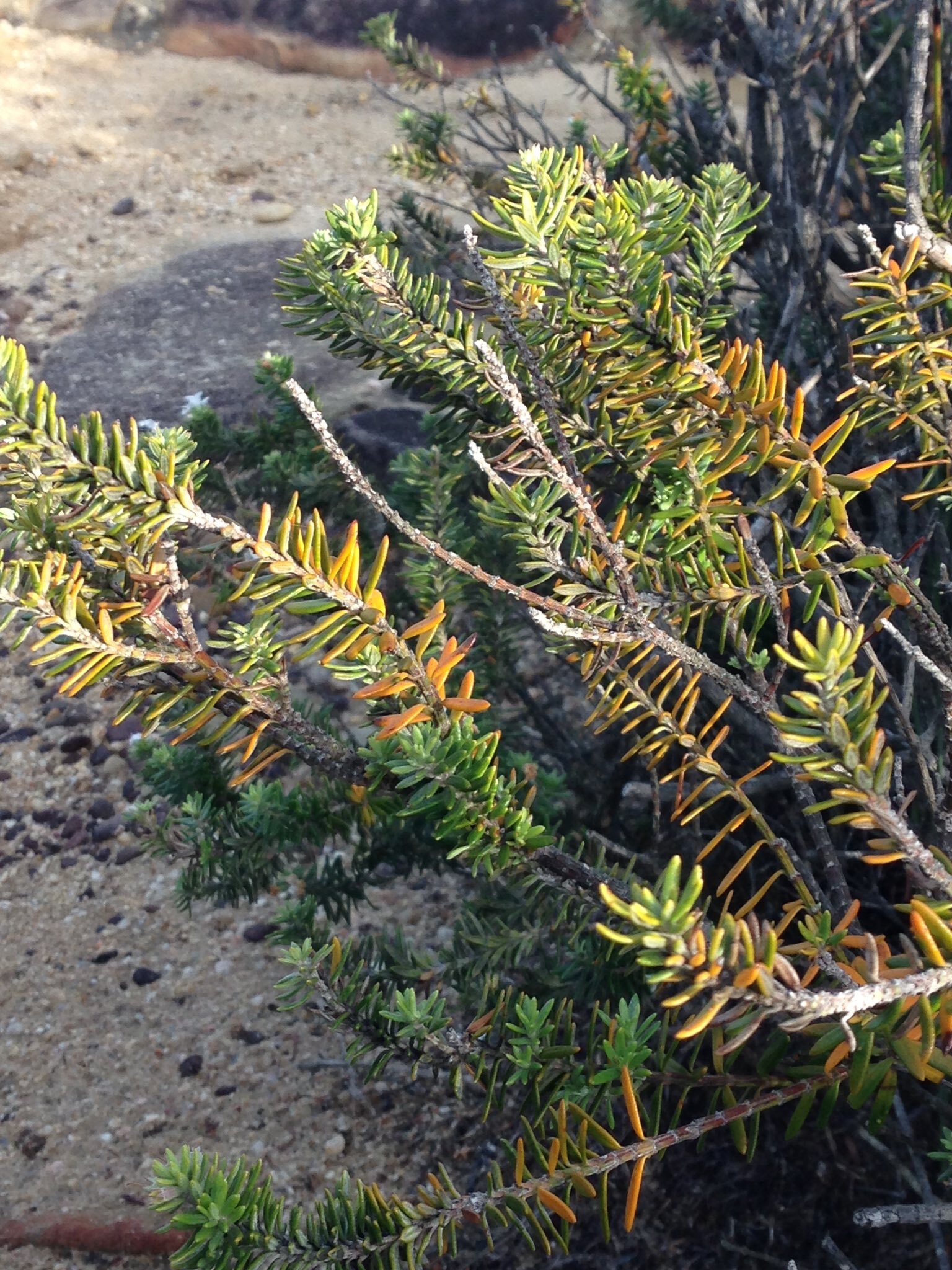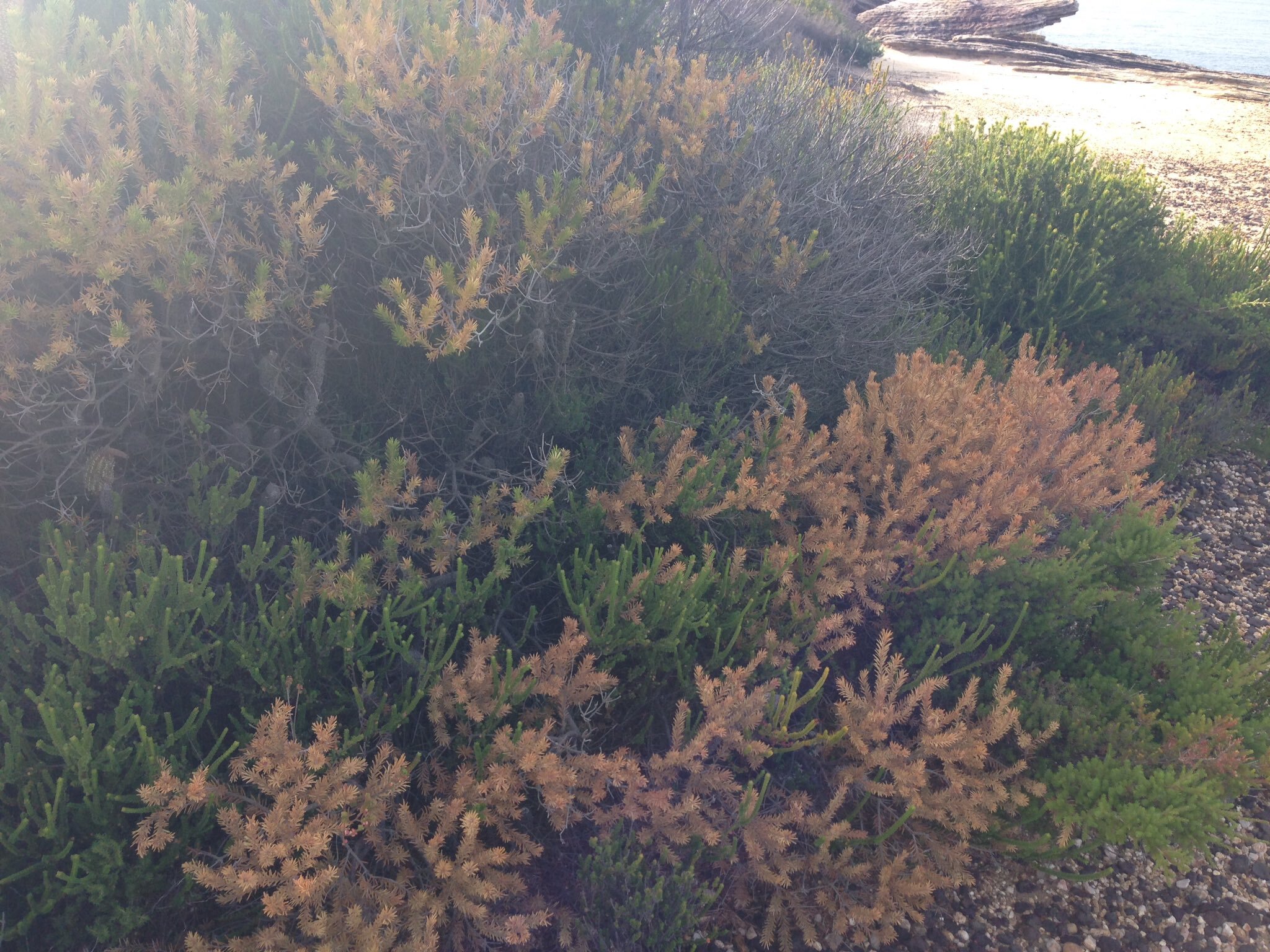DIEBACK AND PHYTHOPTHORA
A PhD Project investigating dieback in the GBMWHA and the role of Phythopthora
PROJECT DETAILS
PhD candidate: Zoe-Joy Newby
Timeframe: 2010 – 2012.
Supervised by: Professor David Guest (University of Sydney), Dr Edward Liew (Botanic Gardens Trust, NSW Department of Environment & Climate Change) and Dr Dan Ramp (School of Biological, Earth & Environmental Sciences, University of NSW)
Funding: The Blue Mountains World Heritage Institute has provided a top-up scholarship of $10,000 for this project, in addition to a University of Sydney PhD Student Scholarship and research funding from the Botanic Gardens Trust.
Background
The aim of this project was to better understand the role of Phytophthora in vegetation dieback in the Greater Blue Mountains World Heritage Area (GBMWHA) and to faciliate better-informed policy and decision-making and risk management by assessing the level of threat that this pathogen is posing to the WHA.
Phytophthora cinnamomi occurs worldwide, causing dieback on a huge range of plant species. In Australia, many hundreds of thousands of hectares of native vegetation in Western Australia, Victoria and Tasmania, and tens of thousands of hectares in South Australia, are affected by the pathogen. In NSW the pathogen has significant local impacts on native vegetation in several widely spaced parts of the eastern regions. So far the pathogen has been detected in various sites within the GBMWHA, including the Wollemi Pine site. There is an urgent need to address the threat within this WHA and set priorities on disease management strategies. This project aims to collect information on the pathogen within the GBMWHA, including pathogen incidence, disease manifestation, associated vegetation type, microclimate and level of disturbance. Such environmental information will be used in ecological modeling to predict sites of likely incursions and to facilitate development and priority-setting of disease management strategies. Ecological modelling component Environmental information will be matched to disease distribution information obtained via fieldwork, expert knowledge, and information from management agencies. Explanatory models will be used to examine the interaction of disease distribution and spread with environmental, land-use, management, and climate factors. Output from the ecological modelling will be integrated into the decision support system to examine the effectiveness of plausible management strategies for minimising disease expression and spread.
Research Questions
Where is dieback within the GBMWHA? Is it caused by Phytophthora or is Phytophthora only playing a contributory role?
What factors are associated with the incidence and spread of this disease? What imapct will environmental change have the incidence of disease?
Can we identify those areas under threat from disease?
What management options are avalible for areas under threat from disease or those areas that are intrinsic to the WHA?
Research Approach
To analyse how the distribution of the dieback pathogen, Phytophthora cinnamomi, correlates with site disturbance due to impacts such as fire, urbanisation and visitation, across vegetation types.
To assess the implications of climate change and alterations to land and water management via tourism, agriculture and urban development for disease expression, through construction of computer models based on overlaying disease datasets with other environmental variables including climate data (rainfall, temperature) and habitat characteristics.
To contribute to the development of an ongoing disease monitoring program based on a series of bioindicators and utilising mapping and predictive modeling.
To develop the foundations of a decision framework for integrating disease monitoring, management, and community education across biota in the GBMWHA.
PUBLICATIONS AND REPORTS
2019. Detecting symptoms of Phytophthora cinnamomi infection in Australian native vegetation using reflectance spectrometry: complex effects of water stress and species susceptibility. Reference: Z.Newby, R.J.Murphy, D.I.Guest, D.Ramp & E.C.Y Liew. Detecting symptoms of Phytophthora cinnamomi infection in Australian native vegetation using reflectance spectrometry: complex effects of water stress and species susceptibility. Australasian Plant Pathology.


